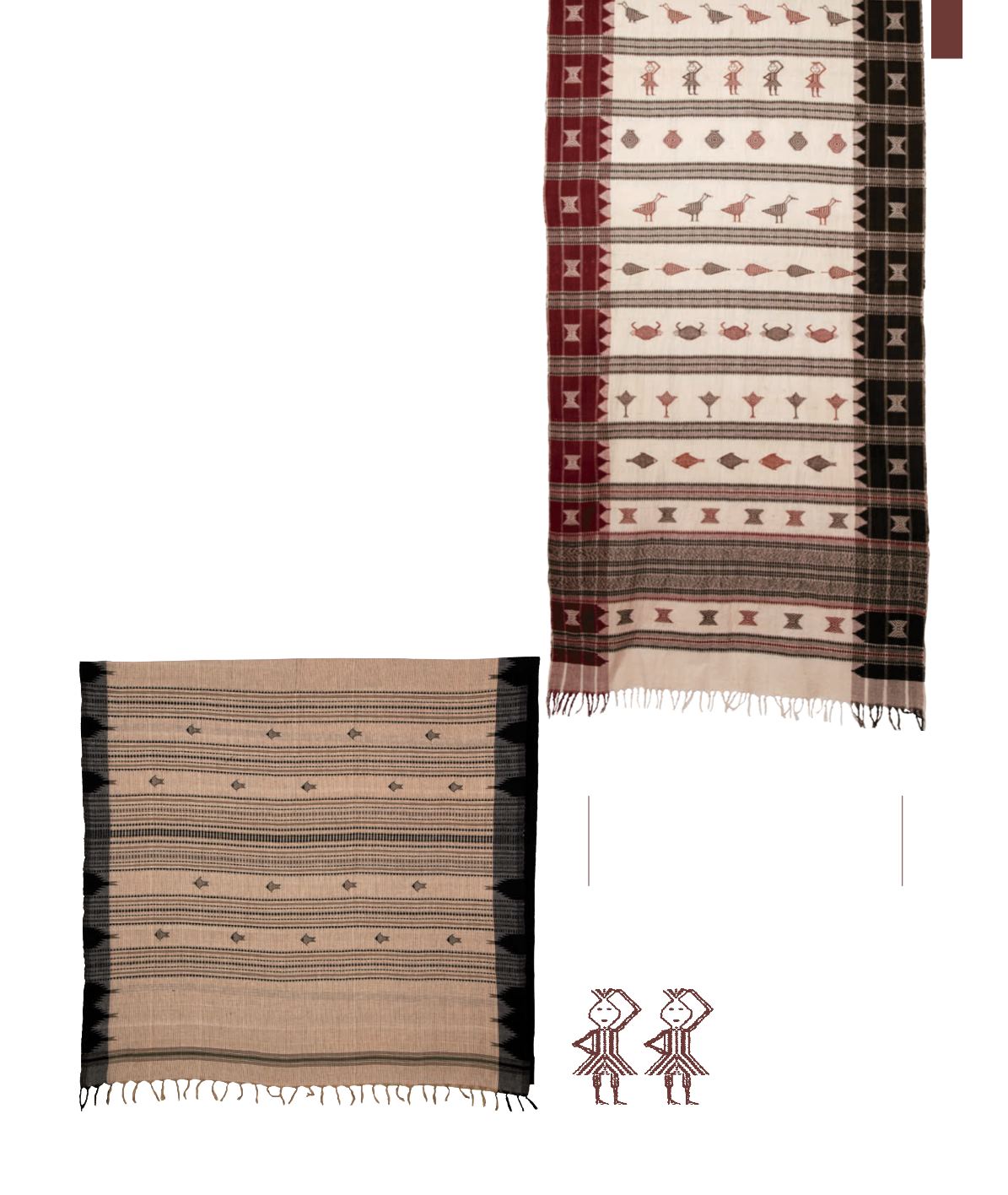
111
anironsolution(madebysoakingrusted iron
filings ina vesselfor15-20daysuntilthewater
turnsblack)andkeptinitfor24hours. The
pot would then be heatedandthemixturewith
theyarnwould beboiledforatleasttwohours.
Theyarnwould then be rinseduntilclean,in
thevillagepond.Thewholeprocess has to be
repeatedtwice after whichtheyarnwouldtake
onadarkbrownordeep blackcolour.
Once the yarn was coloured, it would be ready
for hand-weaving. My paternal grandfather
and father would sit on pit looms and carefully
weave cloths. These textiles typically had an
off-white field with lines and an end-panel with
motifs and a pattern. The motifs were created
by using supplementary maroon or brown yarn.
The traditional weaves were sarees of different
widths, dhotis, shawls as well as towels. A range
of sarees would be woven comprising sarees
for daily wear, sarees for weddings, for rituals
and festivals. All these could be identified by
the motifs and elaborateness of the pattern.
The traditional motifs featured on the sarees
were the tortoise, fish, peacock, birds, dagger,
palanquin as well as geometric motifs.
The traditional motifs featured on
the sarees were the tortoise, fish,
peacock, birds, dagger, palanquin
as well as geometric motifs.


